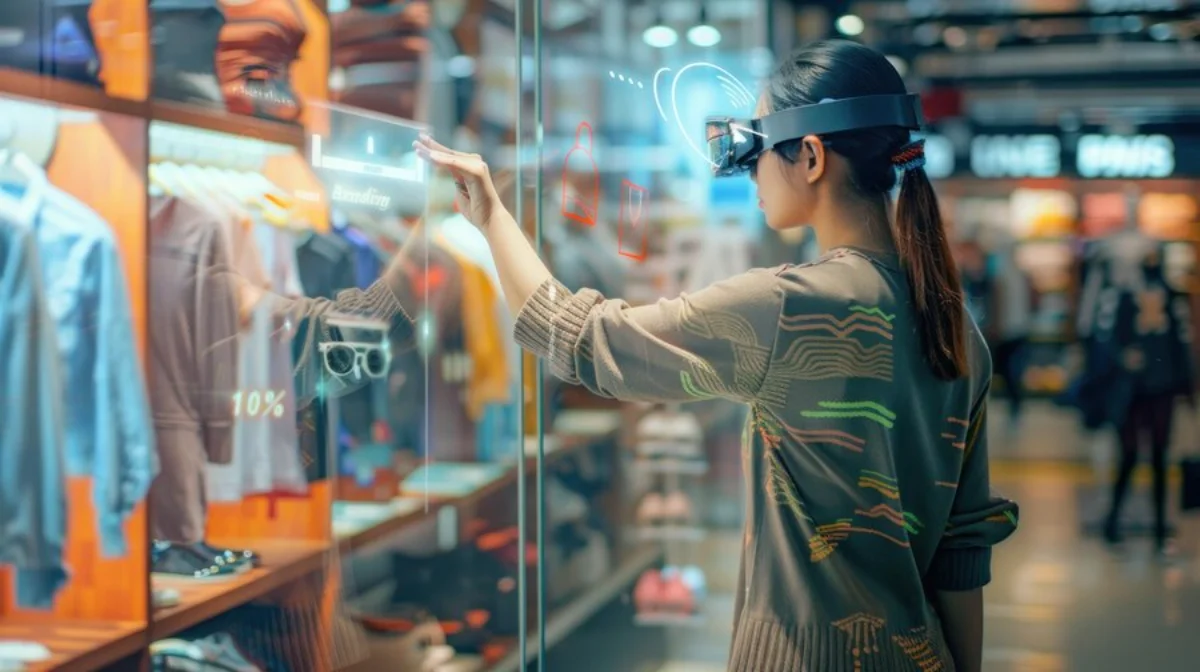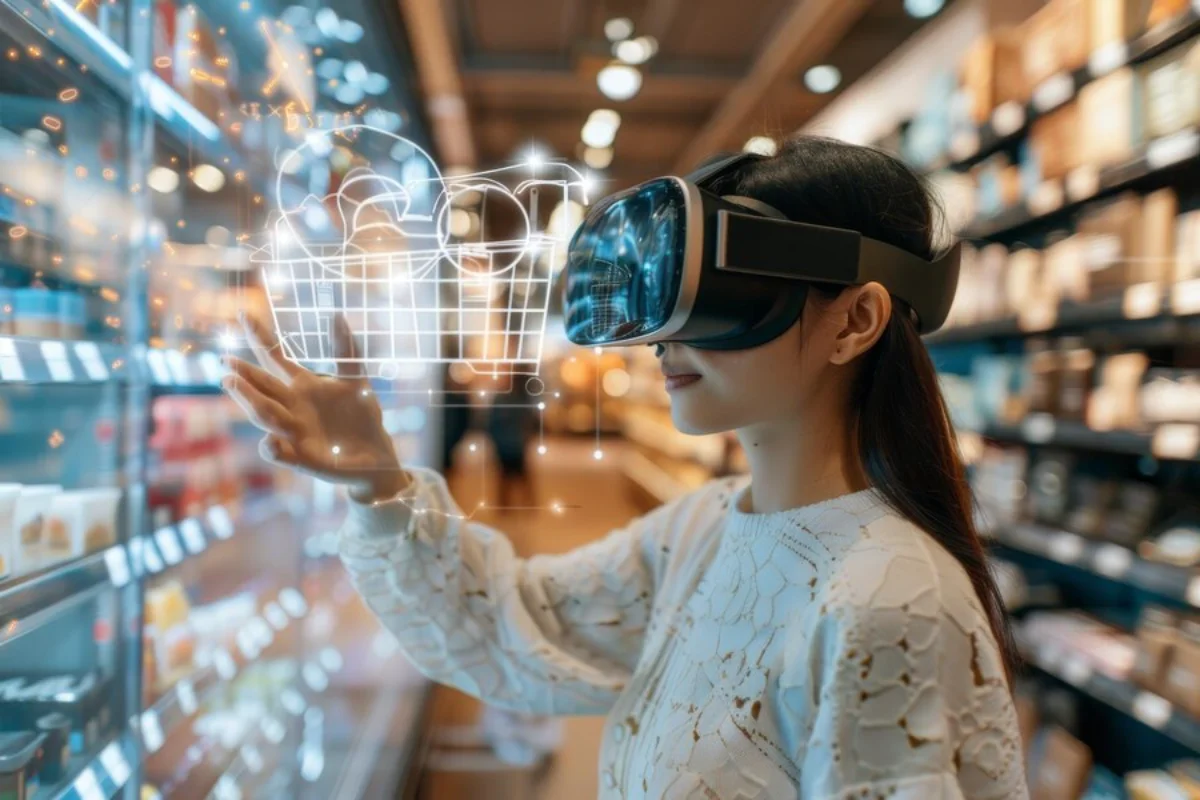The E-commerce Blog

The Impact of VR on Retail Store Design and Layout
The Evolution of Retail Through Virtual Reality
Retail is changing a lot. Virtual reality (VR) in retail is key to the future of store design and layout. Traditionally, physical retail spaces have relied on static layouts and in-person customer interactions. With VR store design, retailers can create immersive shopping experiences. This boosts customer engagement, optimises space, and drives sales.
VR lets retailers test store layouts, visual merchandising, and customer journeys. They can do this without spending money on physical changes. VR is changing how customers engage with retail. It creates virtual showrooms and immersive online stores, enhancing both online and offline experiences.
This article looks at VR store design. It covers its benefits, real-world uses, and how retailers can use this tech. The goal is to create new shopping experiences.

How VR is Transforming Retail Store Design
1. Virtual Store Prototyping and Layout Optimisation
One of the most significant advantages of VR in retail is the ability to design and test store layouts before implementation. Retailers can make digital twins of their stores. This lets them try out different floor plans, shelving setups, and product placements without changing anything physically.
Benefits:
- Cost Savings: Eliminates the need for expensive physical prototypes.
- Data-Driven Decisions: Uses AI-driven insights to optimise store layouts based on customer behaviour.
- Faster Store Openings: Speeds up the design and approval process for new stores.
Example: Walmart uses VR simulations to test store layouts. They analyse how customers move through aisles and interact with products. This helps them create a better shopping experience.
2. Enhancing Customer Experience with Immersive Shopping Environments
VR creates immersive shopping environments. This lets retailers offer engaging and interactive experiences that surpass traditional store layouts. You can customise virtual environments for seasonal themes, brand stories, or personal shopping experiences.
Applications:
- Interactive Virtual Showrooms: Customers can explore products in a 3D virtual space.
- Themed Shopping Experiences: Retailers can create unique virtual store themes. One example of these themes is a winter wonderland for holiday shopping.
- Personalised Navigation: VR-powered AI guides shoppers through custom store layouts based on their choices.
Example: Nike has added VR experiences in some stores. This lets customers enter a virtual space. They can then interact with products in a fun and engaging way.
3. VR-Assisted Staff Training and Operations
VR store design is not just about customer experience; it also plays a crucial role in staff training. Retail employees can train in virtual environments that mimic real store layouts. This helps them learn about product placement, customer service, and emergency procedures.
Benefits:
- Improved Training Efficiency: Reduces the time and cost of onboarding new staff.
- Hands-on Learning: Employees can practise real-life scenarios in a risk-free environment.
- Remote Training Capabilities: Enables consistent training across multiple store locations.
Example: Walmart uses VR training for Black Friday. This helps employees handle busy retail situations better.
The Role of VR in Online and Hybrid Retail Experiences
1. Virtual Stores and Showrooms
E-commerce is booming. Virtual reality in retail connects digital and physical shopping experiences. Retailers are launching VR stores, where customers can explore products in a virtual showroom as if they were inside a physical store.
Benefits:
- Increased Engagement: A more interactive shopping experience than traditional e-commerce websites.
- Higher Conversion Rates: Customers can view and interact with products more realistically.
- Global Accessibility: Shoppers from anywhere in the world can access the store.
Example: Gucci launched a virtual showroom. Customers can walk through a digital store and try on products using VR headsets or mobile AR technology.

2. Hybrid Shopping: Integrating VR with Physical Stores
Retailers are combining VR with physical stores to create a seamless omnichannel experience. Customers can browse virtual stores at home and then visit a physical store to finalise their purchase—or vice versa.
Applications:
- Virtual Shopping Assistants: AI-driven VR assistants can guide customers through product selections.
- Click-and-Collect Enhancements: Customers can visualise their purchases in VR before collecting them in-store.
- Personalised Shopping Tours: VR experiences tailored to individual shopping preferences.
Example: Audi uses VR in showrooms. This lets customers customise and explore car models in a 3D environment. They can do this before deciding to buy.
The Future of VR in Retail Store Design
1. AI-Driven Personalisation in VR Shopping
With the integration of AI, VR store design can become even more personalised. AI algorithms can analyse customer behaviour and preferences. They help create store layouts and product recommendations just for each shopper.
Predictions:
- Real-Time Store Adjustments: VR stores that adapt dynamically based on customer preferences.
- AI-Powered Virtual Assistants: Interactive AI guides that enhance the shopping experience.
- Smart Merchandising: Dynamic displays that change in real time based on customer interactions.
2. VR-Powered Social Shopping Experiences
The future of retail will involve social VR shopping. Customers can shop with friends or interact with sales associates in a virtual environment.
Applications:
- Group Shopping in VR: Customers can explore stores together in a shared virtual space.
- Live VR Shopping Events: Retailers host live product launches and interactive events.
- Virtual Styling and Consultation: Personal shoppers offering advice in VR showrooms.
Example: H&M has experimented with VR shopping parties, where customers can browse collections with friends in a digital space.
3. Sustainable Retail Through VR
VR helps sustainability. It cuts down on physical prototypes, reduces excess inventory, and lowers unnecessary in-store visits. Retailers can test layouts, products, and marketing strategies online. This helps reduce waste and emissions.
Benefits:
- Lower Carbon Footprint: Reduces the environmental impact of traditional retail practices.
- Minimised Returns: Customers make better purchasing decisions through VR previews.
- Eco-Friendly Prototyping: Reduces material waste in-store design and merchandising.
Example: Patagonia uses VR simulations. This helps them improve store layouts. They also test sustainable merchandising strategies before putting them into action.
Embracing VR for the Future of Retail
Virtual reality in retail is not just a trend. It is redefining the way retailers design stores, engage customers, and optimise operations. As VR store design gets easier to use, businesses that create immersive shopping spaces will stand out. This will help them thrive in a competitive market.
Key Takeaways:
- VR enables cost-effective store prototyping and layout optimisation.
- Immersive shopping environments enhance customer engagement.
- Staff training through VR improves efficiency and knowledge retention.
- Virtual stores create hybrid shopping experiences that blend digital and physical retail.
- Sustainability benefits include reduced waste and a lower carbon footprint.
Retailers investing in VR technology today will shape the future of customer-focused shopping. The future of retail is immersive, interactive, and powered by virtual reality.









